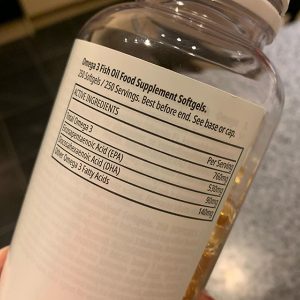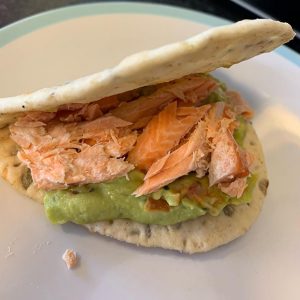We’ve talked before about essential fatty acids which we must get from our diet, as our bodies can’t synthesise them. Omega 3 (or n-3) are polyunsaturated fatty acids. The main types are ALA (alpha linolenic acid), DHA (docosahexaenoic acid) and EPA (eicosapentaenoic acid).
A great source of omega 3 is oily fish (such as salmon, mackerel, anchovies, sardines and more). You also get it in some vegetable oils, nuts and in fortified foods. Generally it’s better to get the nutrients you need from your diet first, and only supplement to fill in any gaps. EPA and DHA are primarily found in animal sources, whereas ALA is more common and found in a lot of plant sources.
If you aren’t eating oily fish 2-3 times a week then supplementing may be a good idea. How much exactly depends person to person. A general recommendation of EPA+DHA would be 500mg/day for most. For people with heart conditions this is higher at 800-1000mg/day.
The benefits from fish oil are numerous and it has shown to be antihypertensive (for high blood pressure), anti-inflammatory, antihyperlipidemic (to lower cholesterol) antiplatelet activity (for circulation) and is linked to improvement in depression and even helping weight loss.
Please note this isn’t to say if you are taking any medications for these conditions you can just eat some fish instead! Always take your doctors advice. While food can help improve certain health markers it doesn’t replace actual medicine.
Pic is Omega-3 Elite supplements from My Protein. The food is trout flakes which has 0.6g/100g of omega 3 (with guac on a flatbread 😋).
References: Mac Nutrition Uni, Miller et al 2014, Zulyniak et al 2013, Kremer 2005, Sublette et al 2011, Noreen et al 2010
(Reposted from Instagram)



